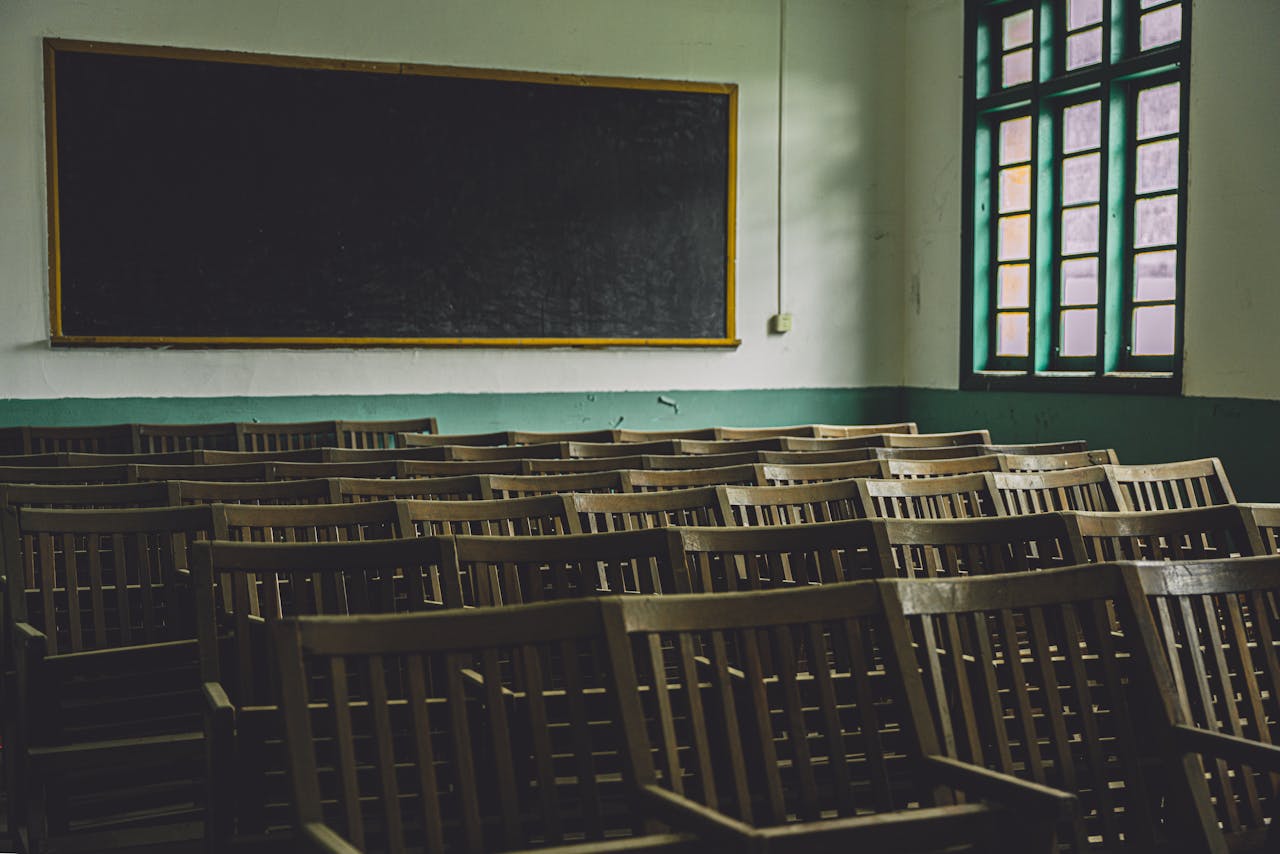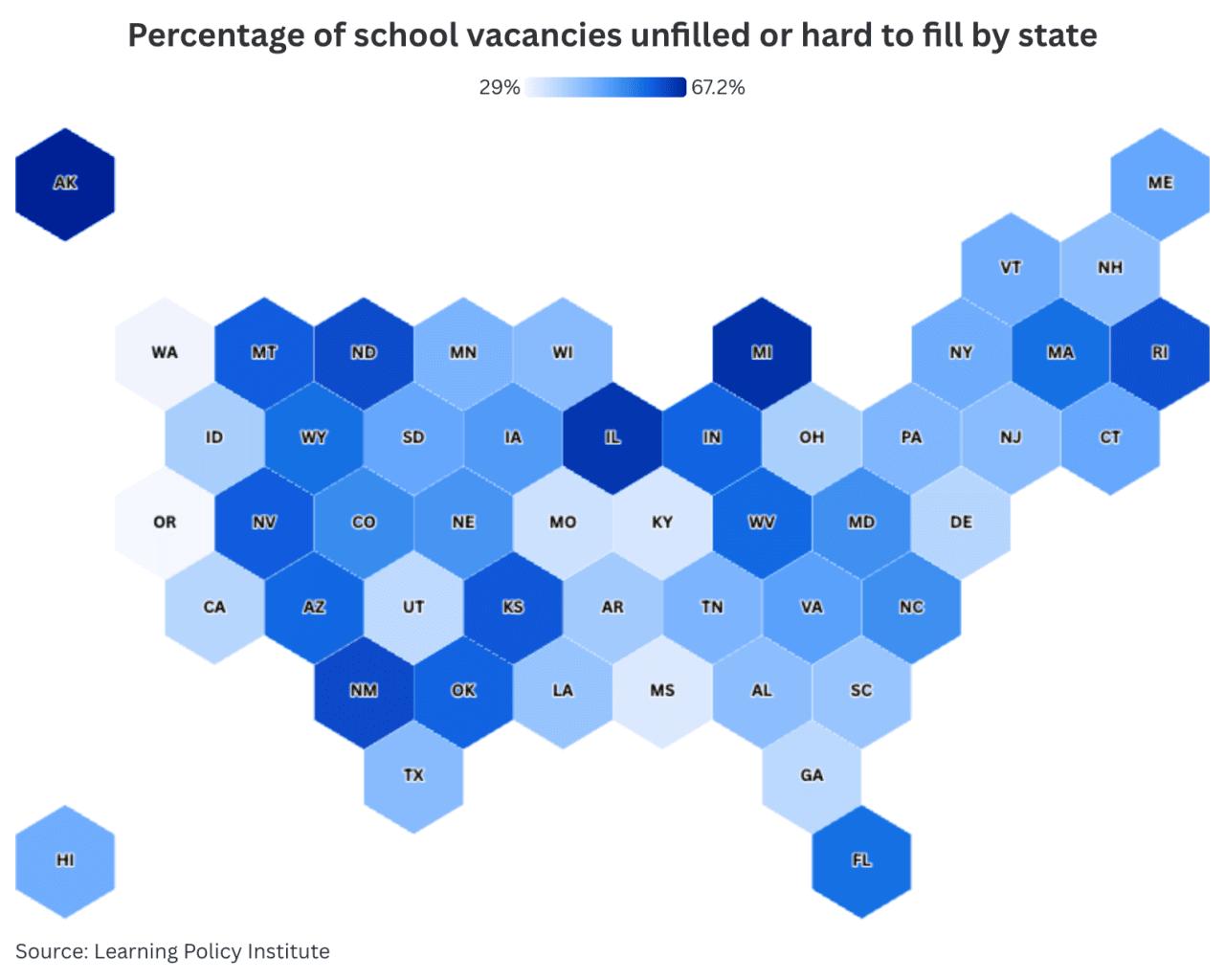
November 6, 2025
These critical professionals assist students with learning, physical, emotional, or developmental disabilities, helping to foster their success both academically and professionally.
When news of teacher shortages dies down, they almost always start up again after only a short reprieve. This constant state of “one step forward, two steps back” has an even more worrying underlying issue: a shortage of special education teachers.
These critical professionals assist students with learning, physical, emotional, or developmental disabilities, helping to foster their success both academically and professionally.
ADHD Advisor explored the data from sources such as Scholaroo and Learning Policy Institute to show which states are most impacted, the potential fallout if this crisis continues, and which populations are most at risk.
A persistent problem: teacher shortages
Depending on the state where you live, teacher shortages may not seem like a major issue. However, 2024 data on teaching shortages nationwide gathered by Learning Policy Institute indicate the problem is widespread:

The states with the highest percentage of schools with unfilled or hard-to-fill vacancies include:
- Alaska (67.2%)
- Michigan (65.4%)
- Illinois (64.6%)
- New Mexico (61.9%)
- North Dakota (61.5%)
Conversely, the states with the lowest percentage of schools with unfilled or hard-to-fill vacancies are as follows:
- Oregon (29%)
- Washington (29.5%)
- Mississippi (32.5%)
- Kentucky (33.1%)
- Missouri (34.5%)
With the lowest percentage across all 50 states being 29%, this data underscores an issue that has been prevalent for years. The same Learning Policy Institute report shows that enrollment in teacher preparation programs has declined by 0.6% over a five-year period, indicating fewer people are taking steps to enter this role in education.
Special education teacher shortages by the numbers
The trends affecting general education teachers also affect special education teachers. Out of the 50 states across the nation, only four indicated that they did not have a shortage of special education teachers in the school year 2022-2023, according to a report by Scholaroo. While shortages vary state by state, their effects are likely felt most strongly in rural areas or school districts with large populations of students from low-income families.

These areas, often lacking crucial resources to rival competitive salaries or professional development opportunities, have a unique challenge in attracting and retaining special education professionals.
Why this matters: COVID-19 learning loss and its ongoing fallout
The timing of these shortages in the last few school years is particularly challenging. As Americans continue to recover from the COVID-19 pandemic, education achievement gaps are widening. A 2024 Education Recovery Scorecard report from the Center for Education Policy Research at Harvard University indicates that the average U.S. student remains half a grade level behind in both math and reading compared to pre-pandemic levels.
An ongoing teacher shortage will only exacerbate this issue. The Harvard report recommends that states and districts alike double down on efforts to close the achievement gap, but looming funding complications stand to hamper those efforts.
The funding threat: Project 2025 and Title I
Federal policy changes backed by the Trump administration have become a major concern for educators. While the name is not officially recognized by the president, many of the sweeping reforms in Project 2025, as outlined in length by the BBC, are supported by his administration.
One such reform is the plan to dismantle the Department of Education, a proposal the president has vocally supported. If completed, billions of dollars in federal education funding through Title 1 programs are at risk. This could heavily impact schools that are already struggling to hire both general and special education teachers.
Who’s left behind: The impact on vulnerable students
The combined effects of teacher shortages and funding threats create a unique risk for students with disabilities. Under the Individuals with Disabilities Education Act, U.S. law guarantees that children with disabilities nationwide receive a free appropriate education. However, when schools lack certified staff or funding, the quality of that education inevitably suffers.
Families in wealthier parts of the country may have the means to send their children to private institutions or relocate to other districts, but those who aren’t as well-off are left with fewer alternatives. States need to make a concerted effort to revamp their education systems to attract top talent.
Efforts and innovations: State and local solutions for recruitment and retention
While the outlook in the education field presents challenges, it’s not too late to reverse the downward trend. There are still measures states can take to improve retention and recruitment. Data gathered by the Learning Policy Institute outlines four key solutions that can make a difference.
- Salary increases: States need to invest funds into salary increases to support the cost of living in their areas, but also to make going through lengthy teacher preparation programs worth it.
- Mentorship and teacher support: One unique proposed solution is for states to invest in more teacher support. Investing in annual support and professional development can offer teachers more reasons to stay with their school district.
- Targeted financial incentives: For teachers carrying large amounts of student debt, offering loan forgiveness and salary supplements can be an excellent retention tool.
- Teacher residencies: Experts recommend offering full financial support during training, a shadow period where teachers work with an experienced lead, and ongoing mentorship resources.
What’s at stake and what’s needed now
The stakes couldn’t be higher for the education industry. With shortages affecting both general and special education sectors, as well as federal funding threats looming, states need to enact policy now to bolster teacher recruitment and retention.
Education services for students with disabilities are naturally a smaller subset of the broader educational landscape, meaning both positive and negative trends are felt more profoundly. As such, each and every state needs to reform its policies to support families and students who rely on public education.
This story was produced by ADHD Advisor and reviewed and distributed by Stacker.
RELATED CONTENT: Advocacy Group Launches ‘Block Walking’ Campaign To Inform Residents Amid Houston School Reforms

